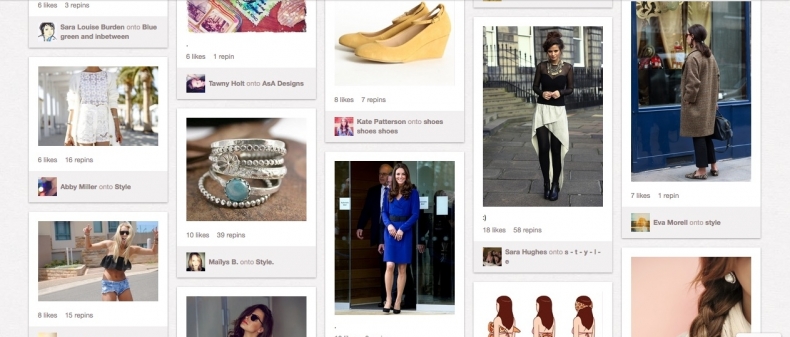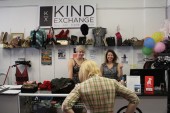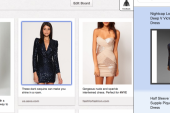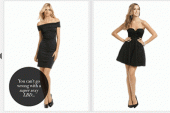
September 2011: the first time I heard about Pinterest. I scrolled through the site for about 2.5 seconds, then dismissed it as just another, you know, high-res photos of brides, cupcakes, and everything nice sort of site.
Boy, was I ever wrong.
April 2012: there are whispers that Pinterest might become even bigger than — gulp – Google. And yet, the alleged genius of this so-called digital juggernaut remains mostly undefined. Nir Eyal writes in The Globe & Mail that Pinterest’s success resides in an obvious secret: “Pinterest wants its uses to do three things: consume, create and share content.”
The fact is that one in four people who visit Pinterest, and other popular social image sharing sites, actually buy what they see. What’s most fascinating about this is that Pinterest isn’t even monetized (yet). A first-round Pinterest financer – and soothsayer, apparently – Jeremy Levine, tells FastCompany.com, “eventually you’ll have so many ways of monetizing it that you just don’t worry about that.” Right in line with his predictions, users are already voluntarily transforming their pinboards into online shopping forums.
But what about the whopping 75 per cent of users who don’t buy the products they rep on their Pinterest boards? There must be a reason they keep on pinning, right?
The tacit antithesis of making a purchase is not making a purchase. As I scroll down my blog, my Tumblr, and recently, my Pinterest page, I get the strange feeling that posting is just as good as purchasing… if not better. The novelty of an item I post on a Sunday afternoon, that I “OMG, I love/need/die” almost always wears off by Monday morning–perhaps precisely because I went through the act of posting it then standing back in admiration as I watch all the ‘likes’ from friends and fans file in. It’s therapeutic, really.
In fact, I find Pinterest alarmingly similar to one of the pillars of fashion blogging: rampant coveting. I create hype around products I like, but don’t buy (I can’t afford them and the turnover rate is so high I’d need at least another whole apartment just to use as closet space), and most of the time I’m glad I didn’t.
Anita Clarke’s Toronto-famous blog I Want I Got was inspired by that same formula; she posts stuff she ‘wants’, but she doesn’t necessarily follow up with her 16-digit VISA number. “The ‘I want’ section is more of an aspirational thing. I have bought some things, but most stuff is way out of my price range. I haven’t crunched the numbers to come up with a ratio but it’s probably under 10%,” Clarke tells me.
But if we’re not buying the stuff we like, what’s the point in posting about it, and in Anita’s case, forging a successful blogging career on that simple, yet brilliant, idea? “I believe people like to share covetable goods with each other for many purposes. It’s a way of letting people know about the styles you like. It also serves a validation purpose when others agree with your choices,” says Clarke.
There certainly exists an undeniable, widespread appeal in the act of posting, sharing, and consuming products online without actually spending a dime.
A recent article in TIME Moneyland, suggests that Pinterest “mimics ‘retail therapy’ without the slog through the mall or big credit card bill.” Not unlike the fashion blogging paradigm, the writer continues to say, “the ritual of finding, cataloguing, and sharing an image online elicits a similar feeling of happiness as actually acquiring the chair, dress, cupcake, or what-have-you in the real world.”
Professor Claire Tsai, of The Rotman School, believes that the feelings of happiness that accompany the acquisition of a new handbag or pair of shoes are integral to understanding consumer psychology. “Many studies show that people derive positive utility (happiness, positive feelings such as excitement, savouring) when they simulate a positive experience (a fun outing, date, receiving a long-awaited product).” While it’s difficult to simulate how it would feel to own a new product people have never seen before, Professor Tsai says, “even for new products, prior research has shown that visual aids can help people simulate.” And perhaps, to go one step further, a simulation is all we really need.
A local example of simulation via marketing gimmick is the ongoing #YorkdaleProm Pinterest Contest. For a chance to win a $500 Yorkdale Mall gift card for the best prom set you must follow Yorkdale on Pinterest and make a Pinterest board that contains a minimum of eight items from at least four Yorkdale retailers– these instructions appear under the headline “Get Pinning.”
To live out your dream prom experience through Pinterest is a simulation of the real thing. “I do believe Pinterest allows Yorkdale’s customers to show their creativity, and not necessarily with what’s available in stores at the time, but mixing their Yorkdale finds with other inspiring pieces that can be found on Pinterest. It’s an easy and fun way to use your imagination,” says Yorkdale Prom Pinterest Contest judge, Nelia Belkova. Imagination is the crux of the Pinterest’s fantastical appeal.
When we consume images of Pinterest items that are unattainable in real life, the act of ‘pinning’ becomes a simulation of actually possessing these items. We feel satisfied, and either continue to fuel our obsession with a particular item by pinning more of it – have you Googled “skull jewellery” lately? – or move on to the next trend.
In an article for The Atlantic, Chris Tackett posits shopping as a modern version of the hunter-gatherer social infrastructure. As modern society evolves, we increasingly forage for intangible goods such as YouTube videos, tweets, games, and images: “It’s no trip to the beach”, says Tackett, “but are we not enjoying a type of pleasurable experience when we look at our Pinterest boards and see all the neat things we’ve collected?”
Dude has a point. Digital consumption is a limitless fantasy. In good times or bad, for richer or for poorer, that Elle Saab couture gown or Jeffery Campbell Lita Shoe in every last colour can always be part of your virtual collection at the click of a mouse. It’s no wonder my first Pinterest experience was akin to a Wedding Planner sequel. Unless you’re Kim Kardashian, your dream wedding (or prom, or handbag, or outfit) is most likely totally unattainable in real life. Let’s face it, ‘Pinning-it’ is sometimes as good as it gets.
____
Justine Iaboni is a Toronto-based fashion blogger and writer. Follow her on Twitter at @EurotrashGirls.
For more, follow us on Twitter @TorontoStandard and subscribe to our newsletter.














